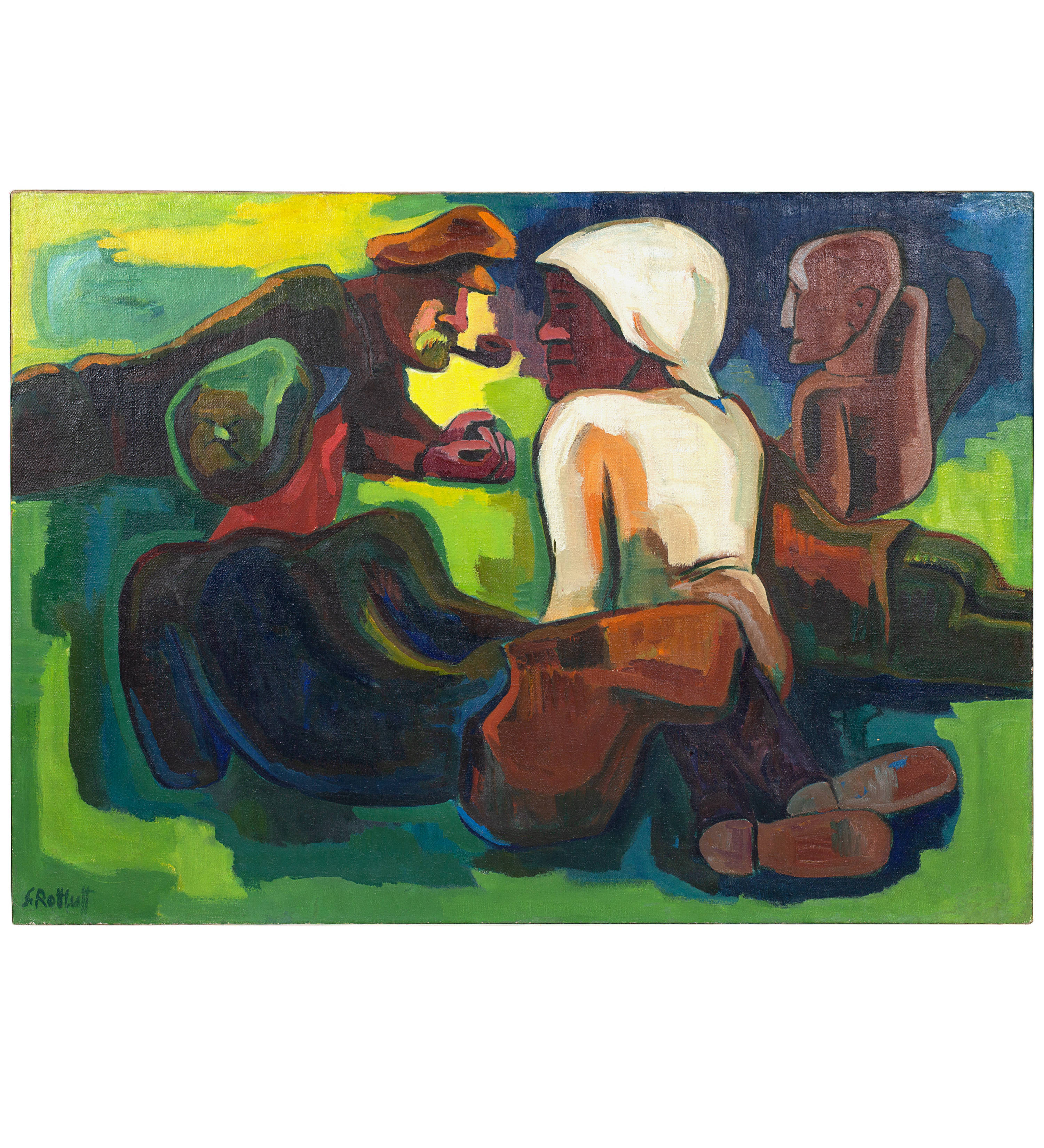- Live Auctions
- Past auctions
- More
- Gallery
- Art Dealing
- Publishing
- Kornfeld today
- The Story of Kornfeld
- Information
Note: The image cannot be displayed for legal reasons. For more information, see the PDF of the catalogue: Link to PDF
Rottluff 1884 - 1976 Berlin
1934
Oil on canvas
98x137 cm
Signed on the lower left by the artist in brush in green oil paint "S. Rottluff", on the reverse of the chassis signed by the artist in brush in black oil paint "Schmidt=Rottluff " and titled "Rastende Schnitter"
Will Grohmann, Karl Schmidt-Rottluff, Stuttgart 1956, pag. 273, 301
Collection Stephanie Dittmayer, Dresden
Kunstarchiv Arntz, Haag, Upper Bavaria (1956)
Galerie Thomas, Munich (1996), there purchased by
Private collection Switzerland
On the old stretcher, in the old nailing. Impeccable and perfectly fresh in colour and in condition
From 1920 to 1931, Karl Schmidt-Rottluff spent the summer months in Jershöft on the Pomeranian Baltic Sea. From 1932 he chose a new summer domicile in Rumbke on Lake Leba at the rear of the Pomeranian Baltic Sea. The depiction of people now increasingly disappears from his work in favour of pure landscape. The painting "Rast der Schnitter" (Rest of the Reapers) certainly still recalls his time in Jershöft, where he took an intensive interest in the lives of fishermen and farmers. Similar to the works from the 1920s, the faces of the reapers in the painting are executed in large outlines and barely executed facial features and their bodies silhouetted against the green and blue surface of the background.
An amicable settlement has been reached with the heirs of Stephanie Dittmayer, the work is free of any claims
1934
Öl auf Leinwand
98x137 cm
Unten links vom Künstler in Pinsel in grüner Ölfarbe signiert "S. Rottluff", rückseitig auf dem Chassis vom Künstler in Pinsel in schwarzer Ölfarbe signiert "Schmidt=Rottluff " und betitelt "Rastende Schnitter"
Will Grohmann, Karl Schmidt-Rottluff, Stuttgart 1956, pag. 273, 301
Slg. Stephanie Dittmayer, Dresden
Kunstarchiv Arntz, Haag, Oberbayern (1956)
Galerie Thomas, München (1996), dort angekauft von
Privatsammlung Schweiz
Auf dem alten Chassis, in der alten Nagelung. Tadellos und vollkommen farbfrisch in der Erhaltung
Von 1920 bis 1931 weilte Karl Schmidt-Rottluff während der Sommermonate in Jershöft an der pommerschen Ostsee. Ab 1932 wählte er ein neues Sommerdomizil in Rumbke am Lebasee an der hinterpommerschen Ostsee. Die Darstellung von Menschen verschwindet nun zunehmend aus seinem Werk zugunsten der reinen Landschaft. Das Gemälde "Rast der Schnitter" erinnert sicherlich noch an die Zeit in Jershöft, wo er intensiv Anteil am Leben der Fischer und Bauern nahm. Ähnlich den Werken aus den 20er Jahren sind die Gesichter der auf dem Bild befindlichen Schnitter in grossen Umrissen und kaum ausgeführten Gesichtszügen und ihre Körper silhouettenhaft auf der grünen und blauen Fläche des Hintergrundes ausgeführt
Eine gütliche Einigung mit den Erben von Stephanie Dittmayer liegt vor, das Werk ist frei von jeglichen Ansprüchen
Note: The image cannot be displayed for legal reasons. For more information, see the PDF of the catalogue: Link to PDF

